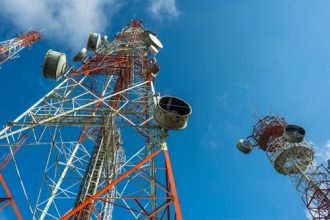June 24, 2019
Drafting Considerations after ChargePoint, Inc. v. SemaConnect, Inc.
In Chargepoint, Inc. v. Semaconnect, Inc., the Federal Circuit affirmed the 12(b)(6) dismissal of a claim of infringement of four U.S. patents directed to charging stations for electric vehicles because the claims were directed to non-statutory subject matter under 35 USC 101.
The case owes its backstory to the “Dieselgate” scandal and the U.S. government’s decision that Volkswagen would owe $2 billion to fund electric vehicle (EV) infrastructure in the U.S., including EV charging stations. Bids to provide the EV charging stations were considered from ChargePoint, SemaConnect, and two other companies. SemaConnect and the two other companies were awarded contracts. ChargePoint was not.
ChargePoint then filed a Complaint accusing SemaConnect of infringing 8 claims of 4 of its patents. SemaConnect responded with a motion under Fed. R. Civ. P. 12(b)(6) to dismiss ChargePoint’s Complaint, including a defense that the asserted claims were invalid under §101.
The District Court granted SemaConnect’s motion to dismiss and found that the asserted claims were invalid under §101.
ChargePoint appealed to the Federal Circuit.
At the heart of the case is the Mayo/Alice test. ChargePoint’s asserted claims were directed to an EV charging station that communicates with a network to determine several key factors, such as:
- When to turn the power supply on and off by means of an electric coupler
- The current flowing through the charging station, as measured by a control device that monitored the car, the station and the local power grid
- The amount of charge going to the car based on local power grid load data
- Validating a payment source for charging the car
It would seem, at first glance, that the claims were not directed to an abstract idea and had the practical, real world function of monitoring the power supply and determining when to turn the charging station on and off. As part of Step 2B of the 35 USC 101 analysis, though, the Federal Circuit would need to determine whether there are additional elements that amount to significantly more than an abstract idea.
The Federal circuit said ChargePoint’s EV charging station patents were directed to the abstract idea of “communicating over a network to device interaction.” The Federal Circuit considered whether the technical solution alleged by ChargePoint was to use network communications to control a charging station. The Federal Circuit found, however, that the “network control is the abstract idea itself, and ‘a claimed invention’s use of the ineligible concept to which it is directed cannot supply the inventive concept that renders the invention “significantly more” than that ineligible concept.’”
The court also held that the discussion in the “Background of the Invention” was sufficient to show that “the combination of connecting generic networking equipment to a charging device to carry out a demand response plan already existed and was well-understood, routine and conventional.”
Although there may have been technical improvements in the asserted claims, the additional elements did not amount to significantly more than the abstract idea. The Federal Circuit therefore affirmed the District Court’s ruling.
Takeaway
Patent applicants can glean three practical takeaways from ChargePoint, Inc. v. SemaConnect, Inc:
- All technical solutions that may be asserted should be described as such within the Specification.
- Description of an existing technology in Background of the Specification could be construed as an admission that the existing technology is “well-known, routine, and conventional.”
- It does not appear that claims reciting network communications are presumptively ineligible under §101. The use of network communication is an abstract concept, however, and may not provide a technical solution.





































